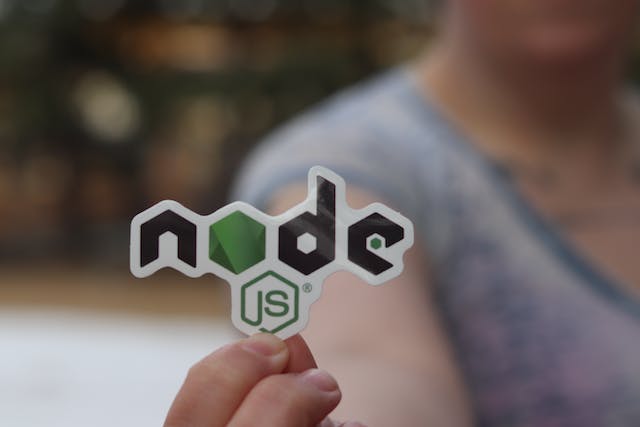JavaScript (JS) stands as one of the pillars of web development, alongside HTML and CSS. It’s a testament to the language’s resilience and adaptability that it remains not just relevant but dominant since its introduction in 1995 by Netscape. However, to label JavaScript merely as a tool for web browsers would be doing it a disservice. Over the years, it has grown beyond its initial scope, establishing its presence in server-side development, mobile app creation, desktop software, and even in areas like game development and Internet of Things (IoT) devices.
A Brief History
JavaScript’s inception was influenced by a need to make the web more interactive. While at Netscape, Brendan Eich created the language in just ten days. Originally named Mocha, and then later LiveScript, it was eventually renamed to JavaScript to capitalize on the popularity of Java, a programming language of the time. However, it’s essential to note that Java and JavaScript are entirely distinct languages and share only a few syntactical similarities.
The Evolution
Over time, the demand for a standardized version of JavaScript led to the creation of ECMAScript (ES), which acts as the scripting language’s specification. Various versions of ECMAScript have been released, introducing new features and improvements, with ES6 (or ECMAScript 2015) being one of the most significant updates.
JavaScript Today
Today, JavaScript powers dynamic, interactive, and rich user experiences on websites. Whether it’s a real-time chat application, a complex Single Page Application (SPA), or animations and interactive graphics, JavaScript is the driving force behind them. Its asynchronous capabilities allow for non-blocking operations, making web pages feel more responsive and swift. With the introduction of platforms like Node.js, JavaScript has also made a profound impact on the server-side, breaking free from its browser-only confinement.
Learning JavaScript opens the door to a plethora of opportunities. As the language’s capabilities expand, so does its role in the tech industry. For anyone embarking on a web development journey, a solid grasp of JavaScript is not just recommended—it’s indispensable.

Before diving headfirst into the expansive world of JavaScript learning, it’s beneficial to equip oneself with foundational knowledge and skills that will smoothen the learning curve. Here’s a checklist of prerequisites to consider:
1. Basic Computer Literacy:
2. Understanding of the Web and Browsers:
3. HTML Knowledge:
4. CSS Fundamentals:
5. Basic Programming Concepts:
6. An IDE or Code Editor:
7. A Modern Browser:
8. Curiosity and Patience:
Remember, while these prerequisites are recommended, don’t be disheartened if you feel you’re lacking in some areas. The beauty of learning lies in the journey, and with time and practice, you’ll fill in any knowledge gaps you might have. The most crucial ingredient in this mix is a desire to learn and grow.
JavaScript is a versatile language, powering everything from simple website interactivity to complex server-side operations. To grasp its vast potential, one must first lay a strong foundation. This section dives into the basic building blocks and fundamentals of JavaScript.
.js file linked to your HTML.let, const, and the older var.JavaScript supports a wide range of operators, allowing you to perform operations on variables:
Decision-making and flow control are pivotal in any programming language.
for, while, and do...while loops.Functions are blocks of reusable code. They can take inputs (parameters) and return an output. In JavaScript, functions can be named or anonymous and can even be stored in variables!
An integral part of browser-based JavaScript, events are actions or occurrences, like a button click or a mouse hover. With JS, you can specify certain code to run when these events occur on specific elements.
Everyone makes mistakes, even seasoned developers. Understanding common JavaScript errors, reading error messages, and knowing how to use browser developer tools can make debugging a more straightforward process.
Starting with these basics provides a solid grounding, allowing you to explore JavaScript’s deeper and more complex aspects. Always practice as you learn, experimenting with small scripts and building simple web interactivities to reinforce your understanding.
Learning the core concepts of JavaScript is crucial for mastering the language. These concepts form the backbone upon which all advanced functionalities are built. Here’s a deep dive into some of these foundational ideas:
Objects and Prototypes:
Scope and Closures:
The “this” Keyword:
The this keyword in JavaScript is a complex topic because its value is determined by how a function is called. It doesn’t refer to the function itself or its lexical scope but depends on the execution context.
Event Loop and Asynchronous Programming
ES6 and Beyond Features
With the release of ES6 (ES2015) and subsequent versions, many new features were introduced to JavaScript:
... for spreading arrays or object properties and gathering function arguments, respectively.First-class Functions
Functions in JavaScript are first-class citizens. This means they can be assigned to variables, passed as arguments, and returned from other functions, enabling powerful functional programming constructs.
The DOM (Document Object Model)
It’s a hierarchical representation of all the elements on a webpage. With JavaScript, you can interact with the DOM to dynamically change content, structure, and styles of a webpage.
Type Coercion
JavaScript is a dynamically typed language, meaning variables don’t have fixed types. However, operations between different types can lead to unexpected results, a behavior known as type coercion.
Hoisting
Function and variable declarations are moved to the top of their containing scope during the compile phase, a behavior termed as ‘hoisting’. It’s why functions and variables can be used before they are declared in the code.
Modular JavaScript
With ES6 modules, JS now supports importing and exporting functionalities across files, facilitating cleaner and more maintainable code structures.
Understanding these core concepts and their intricacies ensures a smoother journey as you delve deeper into the world of JavaScript and tackle more advanced projects and challenges.
JavaScript was initially conceived to breathe interactivity into static web pages. Over time, its capabilities have expanded immensely. Central to this is its ability to interact with the Browser Environment, particularly through the Document Object Model (DOM).
Before diving into DOM manipulation, it’s crucial to understand the broader browser environment:
alert(), setTimeout(), or the location object.getElementById(): Selects an element by its ID.getElementsByClassName(): Gets elements by their class name.getElementsByTagName(): Retrieves elements by their tag name.querySelector(): Allows for more sophisticated CSS-style querying.With access to elements, you can modify content, structure, and styles:
innerText, innerHTML, or textContent to get or set the content of elements.createElement(), appendChild(), removeChild(), and others, you can dynamically alter the structure of the webpage.style property, e.g., element.style.backgroundColor = 'blue';.Events are actions or occurrences, like clicks, mouse movements, or key presses. JavaScript allows for event listening and handling
element.addEventListener('click', functionToExecute); listens for a click event and runs the provided function when it happens.preventDefault() method on the event object, stop default actions from happening (e.g., stopping a form from submitting).While not exclusively tied to the DOM, AJAX (Asynchronous JavaScript and XML) revolutionized web interactions by allowing data retrieval from a server without refreshing the whole page. Modern JS has the Fetch API, a more powerful way to make HTTP requests.
Engaging with the browser environment and manipulating the DOM is fundamental to creating interactive, dynamic web experiences. Mastering these skills will put you in good stead for more advanced JavaScript frameworks and libraries that build upon these foundational principles.

JavaScript, being single-threaded, presents unique challenges when it comes to handling tasks that might take time, such as fetching data from a server or running a computation-heavy algorithm. Asynchronous programming patterns in JavaScript allow these tasks to be processed in the “background,” freeing the main thread to handle other tasks.
1. Callbacks:
Before delving into more advanced asynchronous patterns, it’s vital to understand callbacks, the primary method JS used for async operations in its early days.
2. Promises:
A Promise in JavaScript represents a value which might be available now, or in the future, or never.
Creating a Promise: A Promise is constructed with a function that has two parameters, typically called resolve (when the operation completes successfully) and reject (when the operation fails).
const promise = new Promise((resolve, reject) => { // async operation here if (success) { resolve(value); } else { reject(error); } });
Using a Promise: Promises have then(), catch(), and finally() methods to handle the results.
promise.then((value) => { console.log(value); }).catch((error) => { console.error(error); }).finally(() => { console.log('Operation complete'); });
3. Async/Await:
Introduced in ES2017, async and await provide a more readable way to handle asynchronous code, making it appear more synchronous.
Async: When placed before a function, async ensures that the function returns a promise.
Await: Used within an async function, it makes JavaScript wait until the Promise resolves or rejects.
async function fetchData(url) { const response = await fetch(url); const data = await response.json(); return data; }
4. AJAX (Asynchronous JavaScript and XML):
Basics: AJAX isn’t a technology on its own but a term that represents client-side web applications’ ability to make asynchronous requests. Originally, data was fetched using the XMLHttpRequest object.
Fetch API: A modern way to make HTTP requests, replacing the older XMLHttpRequest. It’s built on promises and works well with async/await.
fetch('https://api.example.com/data') .then(response => response.json()) .then(data => console.log(data)) .catch(error => console.error('Error:', error));
5. Handling Errors in Asynchronous Code:
Asynchronous operations can fail, so it’s crucial to have robust error-handling mechanisms. With promises, .catch() handles errors, while with async/await, traditional try/catch blocks are used.
6. Practical Scenarios:
Most modern web apps are built using API calls to fetch and send data. Whether you’re building a weather application, a chat application, or integrating third-party services, asynchronous operations will be at the core of your data handling.
Asynchronous programming is a cornerstone of modern JavaScript. While it introduces complexity, understanding the asynchronous nature of JS is crucial for any serious developer. With the right patterns, you can manage this complexity and build fast, responsive applications.
JavaScript, like any other language, can be prone to errors and bugs. Debugging is the process of finding and resolving these issues. Fortunately, modern browsers provide powerful developer tools to assist in this endeavor.
Logging Information: Use console.log(), console.warn(), console.error(), and other console methods to display messages.
Interactivity: The console isn’t just for logs. You can run JavaScript code directly within it.
File Navigation: View all files loaded by a webpage. This includes JavaScript, CSS, and other assets.
Breakpoints: Set breakpoints in JavaScript code. Execution will pause at these points, allowing for inspection.
Step Through: Once paused on a breakpoint, step through the code one line at a time, examining the flow of execution.
DOM Inspection: Examine and modify the Document Object Model (DOM) in real-time.
Styles & Computed: View and edit CSS styles, see inherited styles and the final computed values.
Requests Inspection: Monitor all network requests made by a webpage, including details on status, type, and duration.
Filter & Search: Search for specific requests or filter by request type (e.g., JS, CSS, XHR).
Performance Profiling: Record and analyze a website’s runtime to identify bottlenecks or performance issues.
Flame Charts: Visual representation of where time is spent during a webpage’s execution.
The debugger; statement, when placed in JavaScript code, will pause execution (similar to a breakpoint) when developer tools are open. This allows developers to bring attention to specific parts of the code during debugging sessions.
Watch & Call Stack
Watch Expressions: Monitor specific expressions and view their values in real-time as code execution progresses.
Call Stack: View the sequence of function calls leading up to the current point of execution.
Reproduce Reliably: Ensure you can consistently reproduce the bug before trying to solve it.
Isolate the Issue: Use the process of elimination to narrow down where the problem might lie.
Seek Feedback: Sometimes a fresh pair of eyes can see what you might have overlooked. Discussing the problem with a colleague or even explaining it out loud (rubber duck debugging) can be beneficial.
Many browser extensions and add-ons enhance debugging capabilities. For instance:
Effective debugging is an essential skill for any JavaScript developer. By mastering the tools and techniques available, you can ensure that your applications run smoothly, efficiently, and free of pesky bugs.
The dynamic landscape of web development has led to the rise of numerous JavaScript libraries and frameworks designed to streamline and enhance the development process. These tools offer pre-written JavaScript code to aid in developing routine tasks, providing a structure and methodology to build applications. This section will delve into some popular frameworks and libraries, discussing their features, benefits, and use cases.
1. jQuery:
2. React:
3. Angular:
4. Vue.js:
5. Node.js:
6. Express.js:
7. Backbone.js:
8. Ember.js:
9. Svelte:
Libraries: Collections of functions and procedures that can be used by other code. You’re in control and decide when to use them.
Frameworks: Provide a structure where the developer can fill in specific actions. The framework dictates the flow and application structure.
Selecting the right tool depends on the project’s requirements, team expertise, and personal preference. It’s always beneficial to experiment with a few options before committing to a particular framework or library for the long haul.

JavaScript, being a versatile and widely-used language, demands certain best practices to ensure maintainability, performance, and security of your code. Here are some widely-acknowledged best practices to adopt:
1. Use ‘strict’ Mode:
'use strict'; at the beginning of your JS files. It helps in catching common programming mistakes and prevents the use of potentially problematic features of JavaScript.2. Declare Variables with let and const:
var since let and const provide block-level scope, which reduces the risk of unintentional variable reassignment.3. Favor Descriptive Variable and Function Names:
getUserName or calculateTotalAmount instead of vague names like fn or temp.4. Use Functions and Modules to Organize Code:
5. Avoid Global Variables:
6. Always Use Semicolons:
7. Handle Errors with try...catch:
try...catch statement to handle exceptions gracefully.8. Comment Your Code:
9. Favor === Over ==:
=== checks for value and type equality, while double equals == checks for value equality after type coercion. Using === avoids unexpected results.10. Optimize Loops:
11. Avoid Using eval():
eval() function can execute arbitrary code, which makes it a potential security risk. Moreover, it can make your code unpredictable.12. Keep Functions Small and Focused:
13. Use Linters and Formatters:
14. Be Cautious with this:
this can be confusing, especially for beginners. Arrow functions and .bind() can help manage this in callbacks.15. Regularly Refactor Code:
16. Stay Updated with Modern JS Features:
Incorporating these best practices not only results in robust and efficient applications but also enhances the collaborative experience when working in a team, ensuring that everyone can understand, update, and maintain the codebase effectively.
As you stand on the precipice of your JavaScript journey, it’s essential to reflect on the vast landscape of opportunities this powerful language presents. JavaScript, once a simple scripting tool for animating websites, has grown into a foundational pillar of modern web development, driving interactivity on nearly every site you visit and powering robust web applications.
The beauty of JavaScript lies not only in its versatility but also in its welcoming community. Developers from all over the world have collaborated to build libraries, frameworks, and tools that have significantly expanded its capabilities, making it easier for newcomers like you to get started and for professionals to build complex applications.
But like any journey, mastering JavaScript is not about the destination but about the process. With every line of code, you’ll encounter challenges and triumphs, frustrations and eurekas. Embrace these moments. They are the stepping stones to proficiency, and with each hurdle crossed, you’ll gain a deeper understanding and appreciation of the craft.
Never stop learning. The tech world is always evolving, with new updates, tools, and best practices emerging regularly. Stay curious, remain engaged with the community, and continue to hone your skills. Whether you’re aiming to be a frontend magician, a backend guru, or a full-stack developer, the world of JavaScript offers a realm of possibilities.
Remember that behind every web application, interactive website, or dynamic feature, there’s a developer – possibly someone just like you – who started with a basic understanding of JavaScript. With dedication, passion, and the resources highlighted in this guide, there’s no limit to what you can achieve. Happy coding!